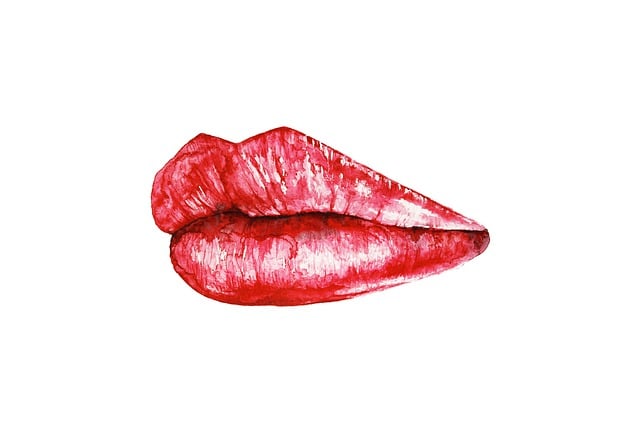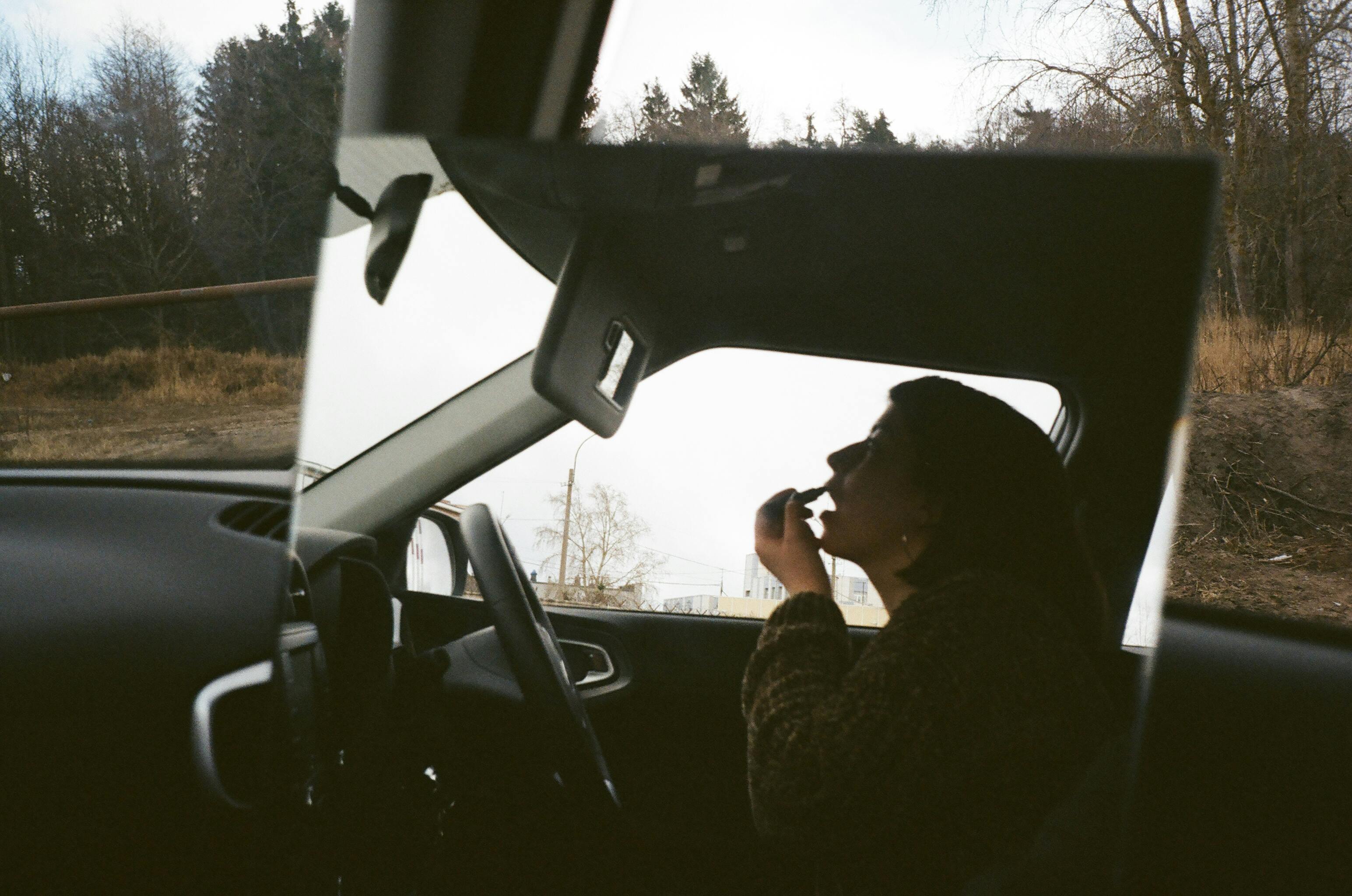When Can I Wear Lipstick After Lip Filler

Lip fillers are a popular cosmetic procedure that can help to enhance the natural shape and fullness of your lips. However, after having lip filler, you may be wondering when you can start wearing lipstick again. In this article, we’ll explore when it’s safe to wear lipstick after lip filler, as well as the best types of lipstick to use and how to minimize any potential side effects.Before wearing lipstick after lip filler, it is important to know a few things. Firstly, you should wait at least 24 hours after your lip filler treatment before applying any makeup. This will give the filler time to settle and ensure that the makeup does not interfere with the healing process. Secondly, you should make sure to use a lip balm before applying lipstick as it will help protect your lips and keep them hydrated. Thirdly, you should use a lip liner to define the edges of your lips and prevent smudging or feathering of your lipstick. Finally, you should use oil-free lipstick formulations as they are less likely to cause irritation or dryness on your lips after filler treatments.
How to Prepare Your Lips for Lipstick After Lip Filler
Having full, luscious lips is a trend that’s here to stay. Lip fillers are increasing in popularity, whether it’s to enhance the fullness of your lips or simply add more definition. But, have you ever wondered how to prepare your lips for lipstick after lip filler?
Lip fillers typically last between 3-6 months, depending on the type of filler used. Immediately following the treatment, there will be some swelling and redness that can take up to 2 weeks to subside. During this time, it’s important to avoid any kind of makeup on or around the lips so that they can heal properly.
Once the swelling has gone down and your lips are no longer red or irritated, you can start wearing lipstick again. To ensure a long lasting result with your lipstick look, avoid using products that contain alcohols or fragrances as this can irritate your lips further. Also make sure to always use a lip balm before applying any type of color so that they stay moisturized and smooth throughout the day.
When applying lipstick after lip filler, make sure you use light strokes and dab lightly with a brush or fingertip rather than swiping back and forth. Doing this will help keep your product in place without smudging or streaking for an even look all day long. Additionally, use a lip liner before applying color as this will help keep everything neat and tidy while also making the color last longer.
Finally, if you plan on doing further treatments in the future such as touch ups or additional fillers, make sure you speak with your aesthetician first before using any type of makeup on your lips again. This way you can be sure you’re taking all necessary precautions to maintain healthy skin while achieving beautiful results!
Tips for Applying Lipstick After Lip Filler
Lip fillers are a popular way to plump and add volume to the lips, but applying lipstick after lip filler can be tricky. Knowing the right techniques for applying lipstick after lip filler can help you get the perfect pout every time. Here are some tips to help you apply lipstick after lip filler:
Use a lip liner that matches your lipstick shade. A lip liner will help define the shape of your lips and prevent your lipstick from bleeding or feathering out. It will also help keep your lipstick in place longer. Make sure to blend the edges of your lip liner with a brush for a natural look.
Choose a matte or semi-matte formula for long-lasting color that won’t move around when you talk or eat. Creamy formulas may look great at first, but they can smudge easily so they are not ideal for post-filler lips.
For an even application, use a brush instead of applying the product directly from the tube or stick. This will ensure that you get an even layer of coverage without any clumps or streaks. You can also use your finger to blend out any harsh lines if needed.
Be sure to apply thin layers of color instead of going in with one thick coat. This will give you more control over where the color goes and how much pigment is applied to each area of your lips. If needed, you can always go in with another layer for more coverage or more intensity in certain areas.
If needed, use blotting paper between layers of color to remove excess product from your lips before adding another layer of color on top. This will help prevent any patchiness and create an even finish that looks natural and lasts longer throughout the day.
Finally, be sure to protect your pout with a nourishing balm before and after application to keep them hydrated and looking their best all day long!
What to Avoid When Wearing Lipstick After Lip Filler
It is important to take extra care when wearing lipstick after lip filler treatments. The skin around the lips is particularly sensitive and susceptible to irritation. To avoid any potential issues, it is recommended to avoid certain types of makeup, including matte lipsticks, lip glosses and long-wear formulas. Matte lipsticks can be drying and cause the skin around the lips to flake or peel. Lip glosses may contain ingredients that can irritate the delicate skin around the lips. Long-wear formulas may also contain ingredients that could cause irritation.
It is also important to avoid any makeup products that contain alcohol or fragrances as these can also cause irritation. Some makeup products may also contain oils which can clog pores and lead to breakouts around the mouth area. Finally, it is important to make sure that all makeup products are non-comedogenic so they will not clog pores and cause further problems with the skin.
In general, it is best to use a lightweight lipstick formula with natural ingredients such as beeswax or shea butter. These ingredients help keep lips moisturized without clogging pores or causing irritation. It is also a good idea to use a lip balm underneath your lipstick for added protection and hydration. Lastly, opt for sheer or glossy finishes instead of matte formulas for a softer look that won’t dry out your lips.
Choosing the Right Formula of Lipstick After Lip Filler
Getting lip fillers can be an exciting and rewarding experience, but it’s important to take the right steps afterwards to ensure your lips look their best. One of the most important aspects of this is choosing the right formula of lipstick to use after receiving lip fillers. It’s essential to select a lipstick that won’t irritate your skin or cause discomfort, and that will complement your new look.
When choosing a lipstick after lip fillers, it’s important to keep in mind that your skin may be more sensitive than usual. Therefore, it’s wise to opt for a product that is specifically designed for sensitive skin or one that is hypoallergenic. This will reduce the risk of irritation and ensure your lips stay healthy and hydrated.
Another factor to consider when selecting a lipstick for post-filler use is its formula. Certain formulas can be too heavy or drying on lips, which can be uncomfortable if you have recently had filler injected into them. Look for products with hydrating ingredients like vitamin E and aloe vera, as these will help keep your lips feeling soft and looking smooth. Similarly, avoid long-wear formulas as these can clog pores and lead to irritation or breakouts around the mouth area.
It’s also important to pick a shade of lipstick that complements your new look without overpowering it. For those who have had subtle enhancements made, a natural hue like nude or rose may be best as this will enhance their features without being too bold or noticeable. Alternatively, those who have opted for dramatic changes may want to try brighter shades such as red or pink to make their new look stand out even more.
Finally, make sure you take into consideration any aftercare advice you have been given by your medical professional following your treatment. Some doctors may advise against using certain types of cosmetics or recommend certain brands in order to maximize the longevity of your results and ensure best possible outcome from filler treatment. Taking all these factors into account will help you choose the perfect formula of lipstick for post-filler use that not only looks great but also helps keep your lips safe and healthy!

The Best Time to Wear Lipstick After Lip Filler
Lip filler treatments are becoming increasingly popular as a way to safely and effectively enhance the appearance of the lips. When it comes to wearing lipstick after lip filler, there is no one-size-fits-all answer. The best time to wear lipstick after lip filler will depend on the type of filler used and how long it takes for the area to heal. Generally speaking, it’s recommended that lipstick be applied only after any swelling or bruising has subsided.
If you’ve had Juvéderm or Restylane fillers, these generally take about two weeks to fully set in and can be covered with makeup a few days after treatment. It’s important not to apply too much pressure when applying lipstick as this can cause irritation and discomfort. It’s also best to avoid lipsticks with a lot of pigment as they can cause further irritation and discoloration of the area.
If you have had permanent fillers such as collagen or fat injections, these generally take longer to settle in, usually about four weeks. During this time, it’s important to avoid any makeup on the area until all swelling has subsided and the area is completely healed. Once healed, lipstick can be applied carefully using light pressure and choosing lipsticks with less pigment.
It’s always best to check with your doctor before applying any makeup products on your lips following a lip filler treatment. Your doctor will be able to advise you on when it is safe for you to start wearing lipstick again and what products are suitable for use on sensitive skin around the lips.
Possible Side Effects of Wearing Lipstick After Lip Filler
When considering lip augmentation, it is important to understand the possible side effects of wearing lipstick after receiving a lip filler. Lip fillers are popular cosmetic treatments that involve injecting hyaluronic acid-based fillers into the lips to add volume and definition. While the results can be beautiful and long-lasting, it is important to understand any potential side effects that may occur when wearing lipstick after getting lip fillers.
One of the most common side effects of wearing lipstick after getting lip fillers is bruising. Bruising occurs due to the trauma caused by inserting a needle into the lips. This can cause swelling and discoloration, which may be more noticeable when lipstick is applied on top of it. It is recommended that patients wait at least two weeks before applying makeup to their lips in order to allow enough time for any swelling or discoloration to subside.
In addition, some types of lipsticks may contain ingredients that can irritate the skin or cause an allergic reaction in those who have recently had a lip filler procedure. It is important to read labels carefully before purchasing a lipstick and make sure that it does not contain any ingredients that could potentially irritate sensitive skin areas.
Lastly, too much lipstick can cause the lips to look overly full or unnatural. To avoid this, it is recommended that patients use a light layer of lipstick and apply more if necessary. Additionally, matte formulas are often preferred as they help create a more natural look without making the lips appear overly glossy or shiny.
In conclusion, there are potential side effects associated with wearing lipstick after getting lip fillers, including bruising, irritation and an unnatural appearance. Patients should always use caution when applying makeup to their lips following a filler procedure and take extra care to choose products that are suitable for their skin type and sensitivities.
How Long Should You Wait Before Applying Makeup After Lip Filler?
When it comes to applying makeup after lip filler, it’s important to wait until the area is healed and the swelling has gone down. Generally, you should wait at least 24 hours before applying any makeup. This will help ensure that the filler is properly absorbed into the lips and that there are no adverse reactions. You should also avoid touching or massaging your lips for at least 24 hours after your lip filler treatment as this can cause irritation and potentially disrupt the results of your treatment.
It’s important to note that different types of lip fillers can last from anywhere between 6 to 18 months, so you should consult with your doctor about how long you should wait before reapplying makeup. Depending on the type of lip filler used, you may need to wait for a few weeks or months before reapplying makeup. Additionally, some lip fillers may require a specific type of makeup that won’t interfere with their effects.
If you’re unsure how long you should wait before applying makeup after lip filler, it’s best to check with your doctor first. They can provide you with specific instructions on how best to care for your lips and when it is okay to apply makeup again. Taking these precautions will ensure that your results look natural and last as long as possible.

Conclusion
After lip filler treatments, it is important to take care of your lips and follow your doctor’s post-treatment instructions. Generally, you should wait at least 24 hours before applying lipstick or other makeup. This will allow for the area to heal and reduce the risk of infection. Makeup with SPF will also help protect your lips from the sun’s harmful rays.
It is also important to consider the type of lip filler used when determining when you can wear lipstick after the treatment. Some fillers may be longer lasting than others and may require a longer period of time before applying makeup. Discussing your individual needs with your doctor can help you determine the best time frame for wearing lipstick after lip filler treatments.
Overall, caring for your lips before and after lip filler treatments is essential for achieving desired results and avoiding potential side effects. Lipstick can be applied once the area has healed, but always consult with a medical professional before beginning any new treatment regimen.
